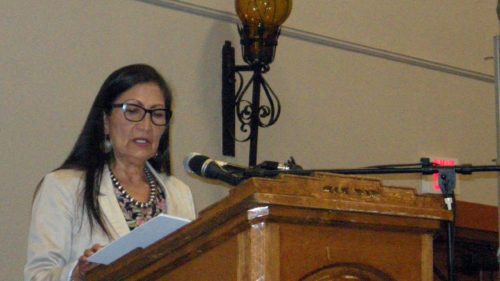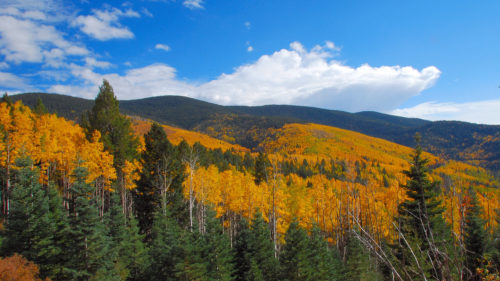Growing up in New Mexico, the words hunting, fishing, camping, hiking and cutting firewood were common terms in our communities. Every year I look forward to spending numerous days in the forest with family and friends sitting behind binoculars looking for wild game, or taking a moment to step back and listen to the water as you look for rising trout. Most people as I was, are unaware of the many state and federal management policies and plans that allow us sportsmen, women, recreationalists, and traditional land users to continue to carry on this heritage within public lands.
We as hunters, anglers, and traditional land users are currently faced with a unique opportunity. The National Forest is currently undergoing a Forest Plan Revision Process. The existing Forest Plan for most forests are extremely outdated. Since then, our environment and sustainable management approaches have changed and developed thanks to science and motivated individuals that care about future generations enjoying the same opportunities we have. What does this mean for you and I as sportsmen and women? This opportunity gives us the ability to work with federal land management agencies to develop sound community and science driven Forest Plans that highlight a forest’s ability to balance multiple-uses and restore water and forest ecosystems for the next 10-15 years. As a hunter that fills his freezer with locally sourced, free ranging, organic wild game and as an angler that uses the very hide from that harvested elk to tie a an elk hair caddis and cast for the Native Cutthroat trout. We must do our part in ensuring the new Forest Plans protect the many qualities that make up our diverse recreational and cultural identities.
Prioritizing and protecting vital watersheds, wildlife habitat, corridors and connectivity for both aquatic and terrestrial species within Forest Plans creates a pathway for animals like elk, mule deer, Rocky Mountain Bighorn Sheep, black bear, cougar, Native Rio Grande Cutthroat trout, and many others to survive within the landscape. With our ever changing environment, many of landscapes that provide for the various species we love are at risk of becoming increasingly fragmented with unwanted infrastructure such as roads, fences, urban development, industrial development, etc. These barriers can severely limit vast amounts of wildlife from completing seasonal migratory movements or prevent them from accessing vital habitat to survive and flourish.
How can you get involved? Whether you are a hunter, angler, hiker, or camper you can play a role in the forest planning process. Contact the forests within your state and the many others you like to recreate in and learn where they are at in the process and the opportunities for public input. Through public comment and meetings I want to encourage you to advocate for plan components like the protection of wildlife, wildlife connectivity and corridors, and ecosystem integrity. Prioritizing these management strategies ensures vital watersheds, wildlife, their habitat and our way of life are protected for future generations.



